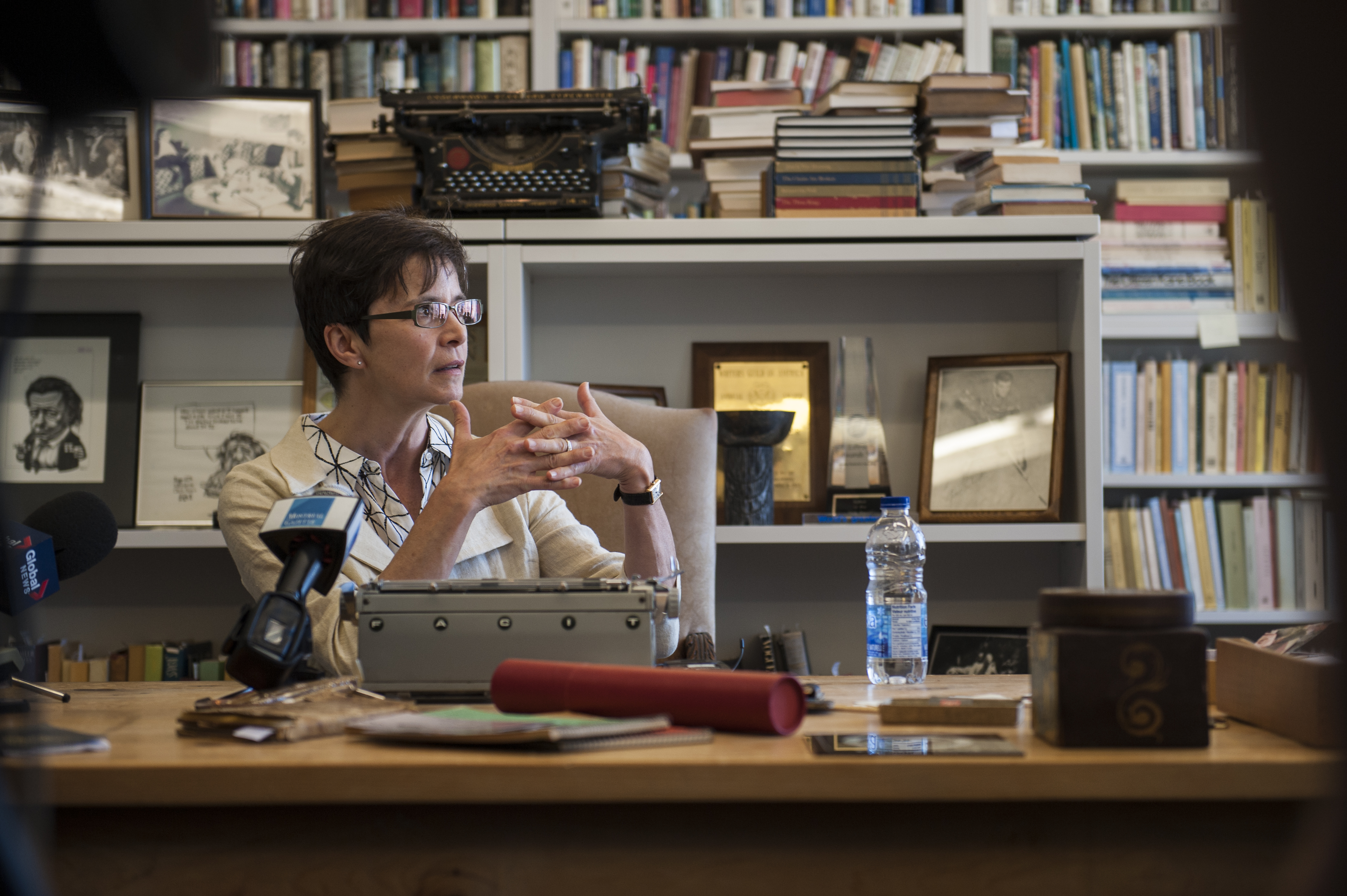Canadian author is working from the Mordecai Richler Reading Room for eight weeks
There’s a room on the sixth floor of the J.W. McConnell Building where the walls are covered with white bookshelves packed with books and novels—some as good as new, others with spines and covers worn and faded. In the middle of the room sits a large wooden table. Papers and notebooks are strewn across it; a passport sits next to a beaten-up notebook; an ashtray with several unsmoked cigars waiting for a light; and, at its center, a manual typewriter sits, waiting to begin its work again.
While these items make up Mordecai Richler’s personal collection, it wasn’t Richler sitting in the high-backed chair in the reading room that bears his name. Instead, award-winning Canadian author Ann-Marie MacDonald was speaking to students while caricatures of Richler around the room looked on.
MacDonald was named the first writer-in-residence of the Mordecai Richler Reading Room Sept. 24 and will be working from there for the next eight weeks.
“It feels like a literary prize, like I won a prize,” she said. “It’s a tremendous honour.”
During her residency, MacDonald will be writing dispatches—or “postcards,” as she sees them—for the Walrus from Mordecai Richler’s desk.
While she met Richler a few times, MacDonald said she wishes she had more time with him.
“People say, ‘if you could have dinner with anybody, living or dead, who would it be?’ and I say I’d drink some good single malt with Mordecai,” she said.
MacDonald said she loved Richler’s writing ever since she read one of his novels at age 14.
“One of my older sisters was studying The Apprenticeship of Duddy Kravitz in high school and she was laughing out loud,” MacDonald said. “She said ‘oh, you’re too young for this book’ … I read it as soon as I could. I loved it.”
As a young writer, MacDonald said having a chance to meet established writers including Michael Ondaatje and Carole Corbeil was a big help for her. “It was deeply comforting and reassuring, and that was valuable in itself,” she said. “Just being befriended and included and taken seriously is huge, because [writing] can be very lonely.”
MacDonald will now have the chance to play that role for Concordia students when she meets with them during her residency—and she said she finds working with young professionals gratifying.
“I know everybody is saying how valuable that’s going to be for the young people—and it will be, I know I’m going to offer them stuff that’s valuable,” she said. “But, it’s also very valuable for me. I find it very nourishing to be around them so I’m really looking forward to it.”
MacDonald says she expects to hear a lot of questions from student writers wanting to know if they’re on the right track.
“I think they’re looking for those little handholds, those little hooks that say ‘how do I do this?’
‘Should I stick with this?’ That’s what everyone wants to know,” she said. “I think I’m going to give them a good deal of encouragement simply because I’m here … just having the contact with somebody who went through exactly what they went through, I think it’s really important.”
